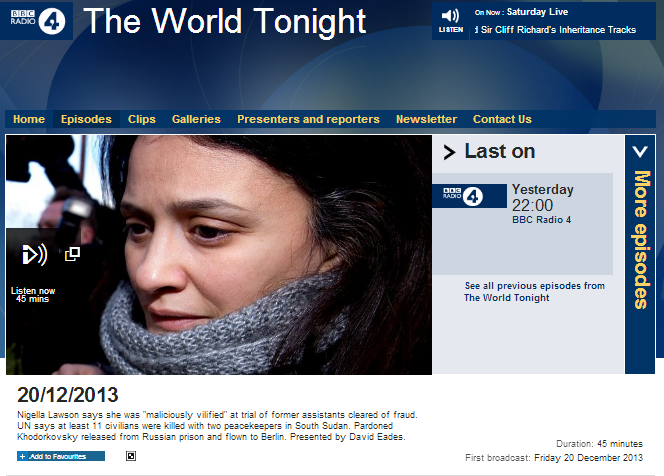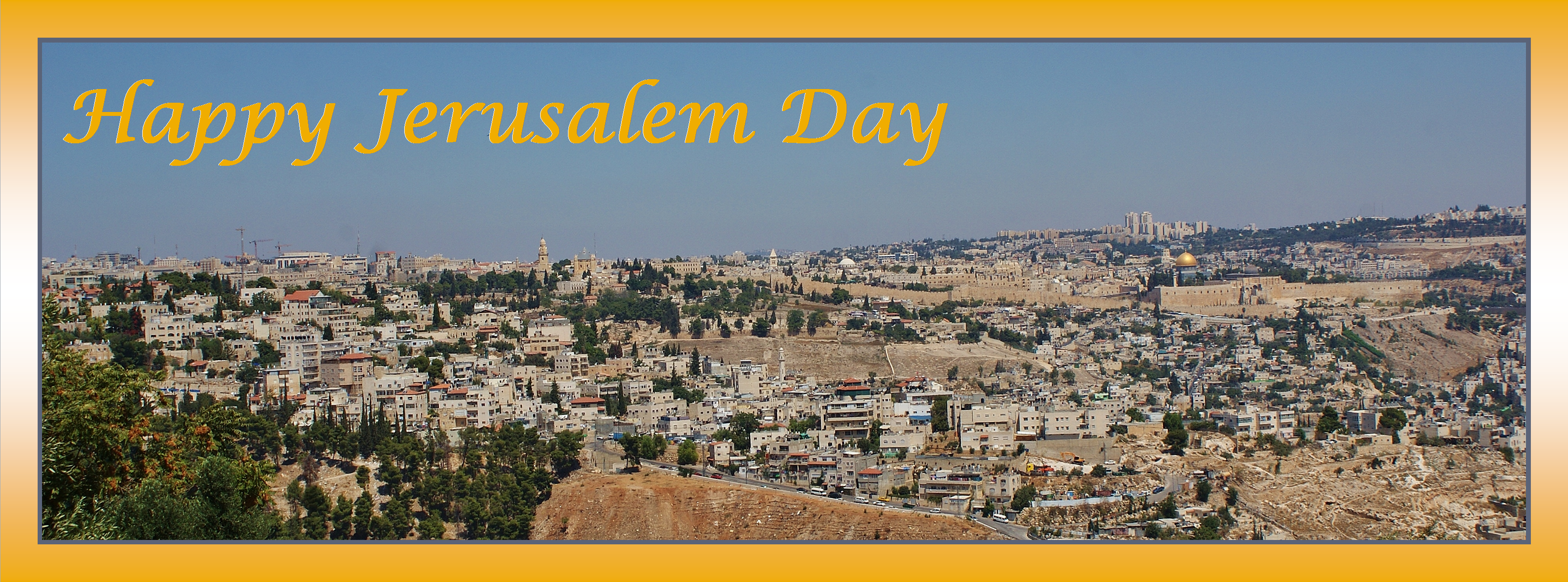The fierce fighting between the IDF and Hamas terrorists in the Gaza City neighbourhood of Shuja’iya on July 20th was the subject of a considerable number of BBC reports across various platforms. In this post we will look at some of the themes those reports promote.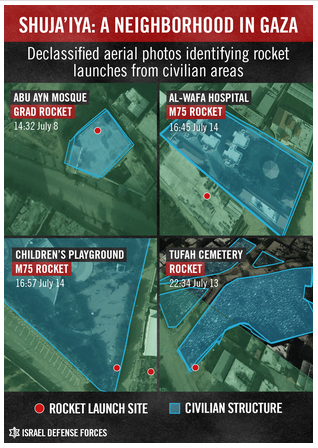
“Massacre”
Whilst all BBC journalists avoided direct use of the word ‘massacre’ themselves, they repeatedly promoted that inaccurate and of course emotive description when it could be attributed to a third party. [all emphasis added]
On July 20th the BBC News website opened a ‘live’ page titled “As it happened: Gaza conflict intensifies“. That page opens:
“Hello and welcome to our live coverage of the conflict in Gaza. Sunday has seen the heaviest bombardment of Gaza since the Israeli offensive began. The Palestinian leadership has condemned as a massacre the killing of at least 60 people in one neighbourhood of Gaza, Shejaiya.”
A written report which also appeared on the BBC News website’s Middle East page on July 20th titled “Gaza shelling by Israel leads to deadliest day of conflict” states in its second paragraph:
“Palestinian President Mahmoud Abbas said the deaths in the Shejaiya district east of Gaza City were a “massacre”. Witnesses spoke of bodies lying in the streets.”
An audio report from July 20th by Lyse Doucet includes a doctor from Shifa hospital talking about “this massacre”.
The synopsis of a July 20th filmed report by Yolande Knell for BBC television news which also appears on the BBC News website’s Middle East page under the title “Gaza shelling by Israel leads to deadliest day of conflict” states:
“Palestinian President Mahmoud Abbas described the deaths in the Shejaiya district east of Gaza City as a “massacre”.”
Another written report from July 21st – titled “Gaza crisis: 13 Israeli soldiers, scores of Gazans killed” also states:
“Palestinian President Mahmoud Abbas said the deaths in the Shejaiya district east of Gaza City were a “massacre”.”
An article from July 21st titled “Gaza crisis: UN calls for ceasefire as deaths pass 500” states:
“More than 60 Palestinians alone were killed during heavy shelling in Shejaiya, in what Palestinian President Mahmoud Abbas called “a massacre”.”
In a July 21st radio interview with the BBC World Service radio programme ‘Newsday’, a doctor from Shifa hospital is heard talking about “the massacre at Shuja’iya”.
No terrorists
Whilst frequent and ample description is given of IDF “shelling”, “bombardment” and “pounding”, any sort of information at all on the terrorists which the IDF was fighting in the Shuja’iya neighbourhood is extremely rare and any reporting on what those terrorists were doing or what sort of weapons they used is even rarer. That of course means that the overall impression given to BBC audiences – inaccurately and misleadingly – is that the IDF was attacking civilians when in fact those civilians were caught up in a battle between the Israeli army and Hamas’ heavily armed militia.
In a radio report by Paul Adams from July 20th the sound of shooting is accompanied by the following vague description by Adams:
“And there’s suddenly gunfire coming from several locations. Someone certainly isn’t observing this ceasefire.”
In a filmed report by Lyse Doucet which appeared on the BBC News website’s Middle East page under the title “Gaza crisis: 87 Gazans and 13 Israeli soldiers killed” as well as being broadcast on BBC television news on July 20th, the only thing she has to say about the terrorists fighting a fierce battle in the area is: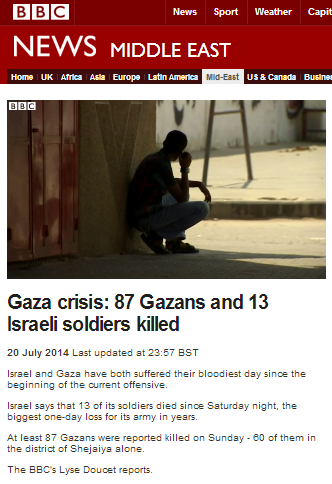
“We saw militants on these streets keeping watch”
And:
“Israeli soldiers have met fierce resistance here.”
In a July 20th filmed report for BBC television news which also appeared on the BBC News website’s Middle East page under the title “Gaza shelling by Israel leads to deadliest day of conflict“, Yolande Knell made do with the following vague and brief description:
“There were some rockets that were fired near there and the fighting broke out again according to one of my colleagues who was at the scene”.
In a written report by Lyse Doucet from July 21st which appeared on the BBC News website under the title “Gaza crisis: Shejaiya assault defines grimmest day” she writes:
“In Shejaiya we saw Hamas spotters taking up positions on empty streets, talking into telephones and walkie-talkies as they maintained a lookout.
Colleagues who arrived later in the day saw gunmen with black balaclavas and concealed weapons moving through the neighbourhood. And journalists and medics got caught in crossfire when a two-hour humanitarian truce was shattered in minutes.”
And:
“For many days now, Israel’s Operation Protective Edge had almost seemed to be a ghost war. In areas we were able to reach, Hamas fighters had only been visible by the rockets they fired, and through defiant messages on their TV and radio networks.”
Notably, no mention is made of the terrorists’ use of weapons beyond guns – such as RPGs and anti-tank missiles. Neither is any mention made of the practice of booby trapping houses or of secondary explosions resulting from strikes on buildings in which weapons and/or explosives are stored. Thus, BBC audiences are mistakenly led to believe that all civilian casualties in Shuja’iya are exclusively attributable to IDF fire, although the likelihood of that being the case is extremely low. And as for the Hamas terrorists? Well they just talk on the phone and wander around in balaclavas according to the BBC.
No terrorist casualties
None of the numerous BBC reports makes any attempt whatsoever to determine how many of the casualties in Shuja’iya were Hamas combatants. In all the reports general figures are given and as has been the practice in the past, BBC audiences are not adequately informed of the fact that those figures come from Hamas sources or of the additional fact that the BBC has not independently verified those numbers.
Those omissions are particularly relevant in light of the instructions issued by the Hamas Ministry of the Interior, from which it is clear that there is an organized Hamas campaign to inflate the numbers of civilian casualties and conceal the number of dead combatants in order to influence public opinion abroad.
“Anyone killed or martyred is to be called a civilian from Gaza or Palestine, before we talk about his status in jihad or his military rank. Don’t forget to always add ‘innocent civilian’ or ‘innocent citizen’ in your description of those killed in Israeli attacks on Gaza.”
Whether by accident, by design or by coercion, the BBC seems to be following the Hamas instructions closely, but of course it is actually the job of BBC journalists to cut through a terrorist organisation’s propaganda and bring the real picture to audiences. With regard to the all-important topic of combatant casualties, the BBC has come nowhere near to meeting that objective.
Some examples of typical reporting on casualties in Shuja’iya include:
“At least 87 Gazans were reported killed on Sunday – 60 of them in the district of Shejaiya alone.” (synopsis to report by Lyse Doucet, July 20th)
“Over 500 Palestinians, mainly civilians, have been killed since the Israeli offensive began two weeks ago, Gaza’s health ministry says.” (BBC News website, July 21st)
“Gaza has suffered the highest death toll since Israel’s offensive began, with at least 87 people reported killed on Sunday – 67 of them in one area.” (synopsis to report by Yolande Knell, July 20th)
“Gaza has come under the most intense shelling since the launch of Israel’s offensive 13 days ago, with more than 50 people reported killed in one district. The deaths occurred at Shejaiya, east of Gaza City, Palestinian medics said.” (synopsis to report by Lyse Doucet, July 20th)
“Gaza’s list of the dead crossed 500 and keeps climbing, according to figures from the health ministry here. The UN says the vast majority are civilians; many are children.” (Lyse Doucet, July 21st)
We have of course addressed the topic of the sources of UN OCHA supplied casualty figures here previously and in addition, a UNICEF information officer informed BBC Watch that its own figures – collected independently – include anyone up to the age of eighteen in the category of children. Notably, according to the latest UNICEF figures from July 21st, the number of male casualties under 18 was well over double the number of female casualties.
Downplaying prior warning
As is well known, Israel gave the residents of Shuja’iya prior warning of the necessity to evacuate the neighbourhood four days before the operation and even delayed it in order to give them more time to organize their move. That fact is not mentioned in the vast majority of the reports on the subsequent events and the concurrent fact that Hamas instructed the residents to stay put and act as human shields is not conveyed to BBC audiences at all.
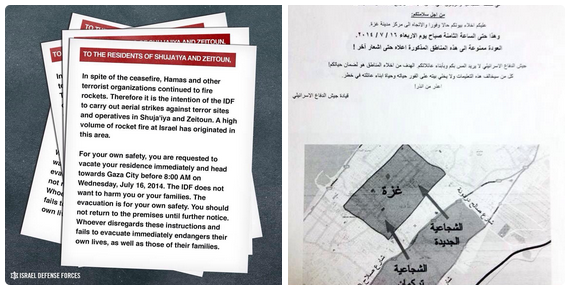
Lyse Doucet writes:
“Israel said it repeatedly warned residents to leave the area.
“We asked them to leave again and again,” Israeli Prime Minister Benjamin Netanyahu told BBC Arabic TV.
“We called them up, we texted, and we sent them messages. But Hamas said ‘don’t leave’,” – a reference to allegations that Hamas is using civilians as “human shields.”
“Warning?” said Anas, a 20-year-old university student with a mop of curly black hair who stood on a street corner. “They don’t warn us, they kill us.”
Whenever we ask Gazans that question, they reply: “Where do we go?” “
The fierce fighting between the IDF and Hamas terrorists on July 20th in Shuja’iya undoubtedly included many tragic scenes which were the result of civilians who had been advised to evacuate being caught in the crossfire – and it is upon those scenes which BBC reporting has exclusively focused. Whilst that may make for ‘compelling’ television or ‘powerful’ radio, it does not necessarily give BBC audiences the background and context which they need in order to be able to understand the entire picture of what happened there and why. The BBC’s reporters currently on the ground in Gaza have so far failed to provide audiences with many if not most of the vital parts of that picture.


